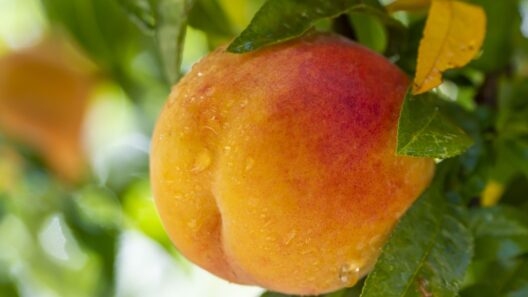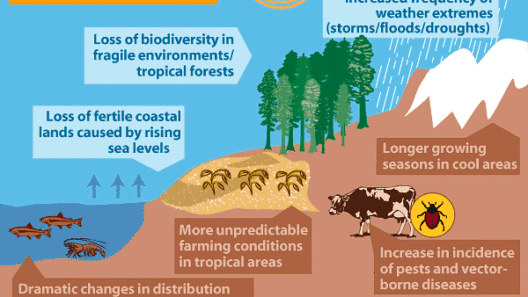The cultivation of cherries is a passionate pursuit for many farmers and horticulturists, as well as an enchanting experience for enthusiasts. This succulent fruit, with its nuanced flavors and vibrant colors, is intimately tied to specific climatic conditions. In exploring the symbiotic relationship between climate and cherry growth, one may uncover not just agricultural principles but a deeper appreciation for the intrinsic beauty of nature’s systems.
To delve into the sweet spot for cherry cultivation, we must first elucidate the climatic requisites for optimal growth. Cherries thrive in temperate regions, which offer a unique blend of warmth and chill, defining their growing conditions. The two primary types of cherries—sweet (Prunus avium) and sour (Prunus cerasus)—each demonstrate similar climatic inclinations, yet exhibit distinct adaptations to their environments.
The primary climatic prerequisite is a well-defined winter chill. Cherries require a period of dormancy, necessitated by prolonged exposure to cold temperatures. This chilling requirement varies by cherry cultivar, with some varieties needing as few as 300 chilling hours (temperatures below 45°F) while others demand upwards of 1,000 hours. Without this crucial cold snap, the subsequent spring bloom may be delayed or even entirely compromised, which can lead to a significant reduction in fruit yield.
In transition from winter’s embrace to spring, the importance of frosts becomes apparent. Late spring frosts pose a perennial threat to blossoming cherries. Once the cherry trees begin to bloom, temperature fluctuations become critical. A sudden drop in temperature can obliterate blossoms, impacting potential yield. The farmer’s vigilance during this period is paramount, as consequent crop losses directly affect both local economies and consumer markets.
However, temperature is but one component of a multifaceted ecosystem. Adequate precipitation is essential for cherry cultivation. Cherries prefer a well-drained, loamy soil enriched with organic matter. As such, regions with moderate rainfall—encompassing around 20 to 30 inches annually—foster healthy tree growth. Excessive moisture can lead to root rot and other fungal diseases, further complicating the delicate balance necessary for prosperous cherry orchards.
In addition to these climatic conditions, sun exposure remains a cornerstone of successful cherry growth. Trees flourish under full sun conditions, requiring a minimum of six hours of direct sunlight each day. The intensity and quality of sunlight directly influence the fruit’s flavor profile, promoting the development of sugars and phytonutrients. Consequently, regions that enjoy longer days in late spring and summer—such as those found at northern latitudes—often yield cherries of superior taste and quality.
The geographic intricacies of growing cherries also command attention. Factors such as elevation play a significant role in tempering temperatures. Regions located at higher elevations, such as parts of the Sierra Nevada or the Appalachian Mountains, tend to have a cooler climate ideal for cherries. These elevated conditions provide the necessary temperature range to support dormancy and fruit setting. Furthermore, the unique microclimates created by geographical variations can enhance ecological diversity, leading to the cultivation of heirloom and rare cherry varieties.
As we consider these climatic influences, it is critical to address the overarching implications of climate change on cherry cultivation. The increasing volatility of weather patterns—marked by unpredictable frosts, extended droughts, and torrential rains—poses a formidable challenge to farmers dedicated to this fruit. As temperatures rise globally, the selection of suitable cherry cultivars becomes even more critical. Adaptative strategies, such as the planting of heat-resistant varieties or implementing irrigation systems to mitigate drought stress, are increasingly being utilized to ensure sustainability within this delicate ecosystem.
An exciting development in cherry cultivation is the advent of agroforestry practices, integrating trees with crops and livestock. This approach not only maximizes land use but also enhances biodiversity and soil health. The intercropping of cherries with complementary species can result in reduced pest susceptibility and improved ecosystem services, showcasing a harmonious relationship between agriculture and ecological wellbeing.
Cultural practices also play a significant role in cherry cultivation. Farmers are now venturing into organic practices, eschewing synthetic pesticides and fertilizers in favor of natural alternatives. This trend is increasingly pertinent, as consumers demand fruit that is not only delicious but also sustainably grown. Initiatives promoting sustainable agriculture can empower local communities and foster a communal sense of responsibility towards nutrient-rich growing practices.
Ultimately, the quest for the perfect cherry is not solely an agricultural challenge but a reflection of our relationship with nature. These delightful fruits serve as a seasonal reminder of the intricate balance required for their growth—a testament to the interconnectedness we share with the Earth. As consumers, especially in an age of environmental consciousness, the significance of supporting local farmers embracing sustainable practices cannot be overstated.
In conclusion, understanding the best climate for growing cherries involves a comprehensive appraisal of not just climatic conditions but also cultural, ecological, and economic factors. A proactive approach towards the challenges posed by climate change, coupled with innovative agricultural practices, can usher in a new era for cherry cultivation, ensuring the sweetness of this beloved fruit continues to inspire and delight future generations.








